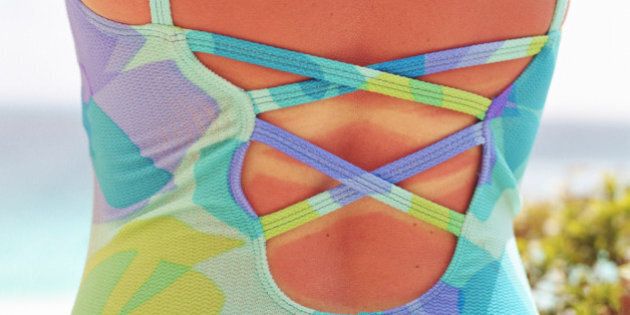
Getting sunburnt as an adult falls into the same category as speeding fines and having a staple diet of Mie Goreng -- juvenile and, well, not healthy.
But regardless of the endless warnings and slip, slop, slap culture in Australia, many of us continue to get burnt at least once over the summer months. More often than not, it’s accidental and probably due to the enticing nature of the sun (particularly after a spell of rainy days) but let’s be clear: sun damage, as a fully grown adult, is never OK.
“Sunburn is associated with melanoma, the most deadly form of skin cancer and once the damage is done, there is no way to reserve it,” Vanessa Rock, Skin Cancer Prevention Manager at Cancer Council NSW told The Huffington Post Australia.
Which is why being aware of certain situations (other than the beach) where you are at risk of incidental sun exposure -- for instance, driving in the car, if your desk is near a window or when you take a short walk -- is your best defence.
If you’ve happened to be caught out, there are a few things you can do to lessen the burn and assist with the healing process.
But before we get to that, it’s important to understand that in medical terms, getting sunburnt is not dissimilar to getting a burn from a hair straightener, oven or boiling water.
So if you think of what those kinds of burns do to your skin, the sun is doing a similar thing.
Just like any other burn, there are three phases of sunburn starting with the “immediate” stage.
“This takes place three to six hours post-exposure where skin is painful, red and hot,” dermatologist Rodney Sinclair, Sinclair Dermatology Investigational Research, Education and Clinical Trials told HuffPost Australia.
Your first port of call should be to get out of the sun immediately and focus your attention on cooling the affected area.
“A cool shower can help take the sting out as well as cool compresses (wet towel) or aloe vera cream,” Sinclair said.
It’s also a good idea to spray on local anesthetic such as Solacaine or topical anesthetic creams containing lignocaine or benzocaine.
“This provides pain relief which is effective for one to two hours and works much better than Paracetamol or aspirin,” Sinclair said.
The next phase is called “intermediate” and occurs 24 to 48 hours post-exposure.
“By this point your skin is red and less painful, unless it is re-exposed to sunlight. Continue to apply topical anesthetic cream or spray as required. Aloe vera cream and moisturisers can also be cooling and it is best to wear clothing over the affected areas to minimise exposure to sunlight. On top of that, apply sunscreen beneath your clothes to give yourself the best chance of protection,” Sinclair said.
Finally, the “delayed” phase occurs three to seven days post-exposure.
"This is where the skin will begin to peel. Frequent and abundant moisturisers are probably the only thing that will help -- the thicker the better at this stage,” Sinclair said.
For a refresher in all things sun protection, head here.